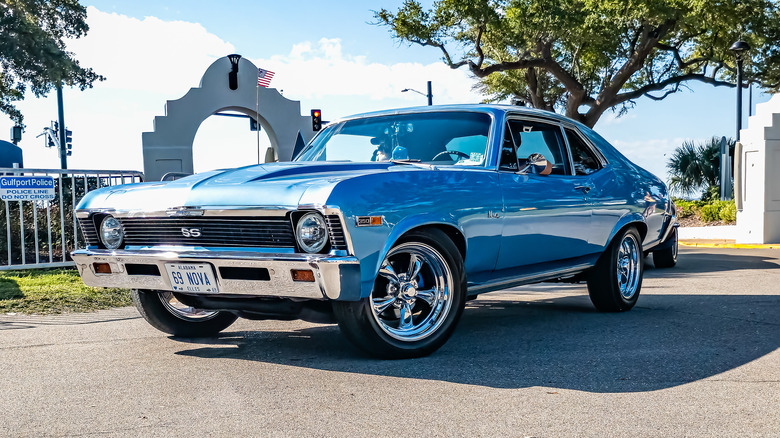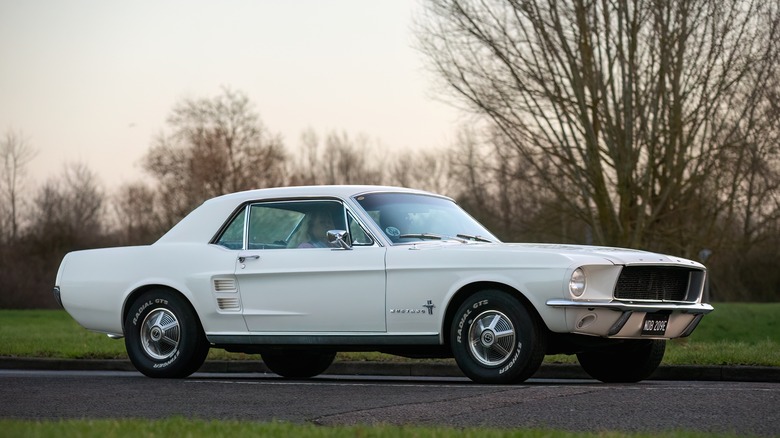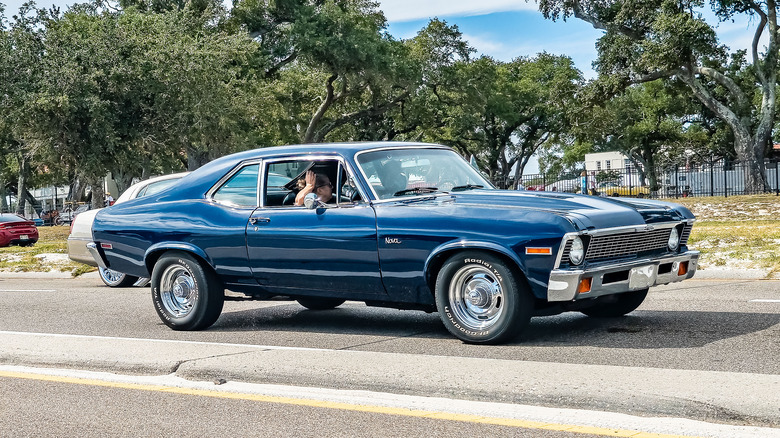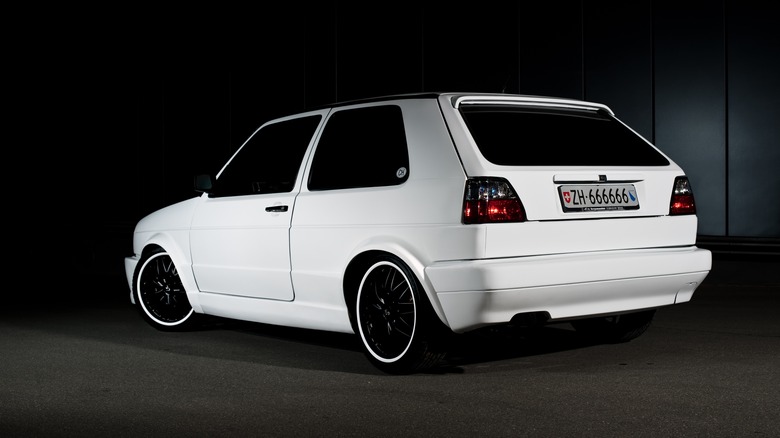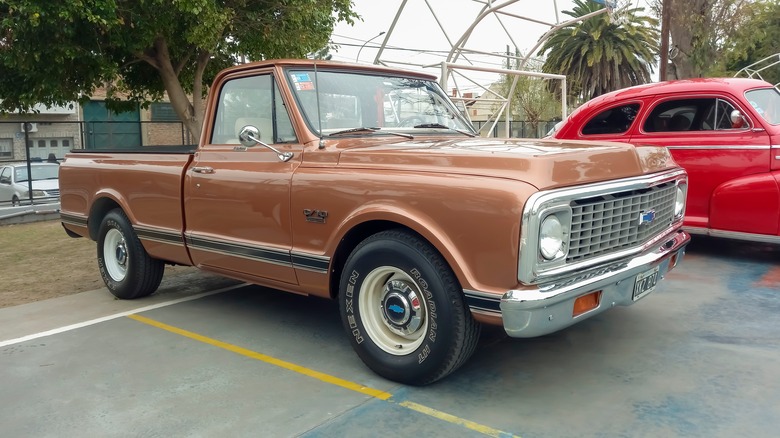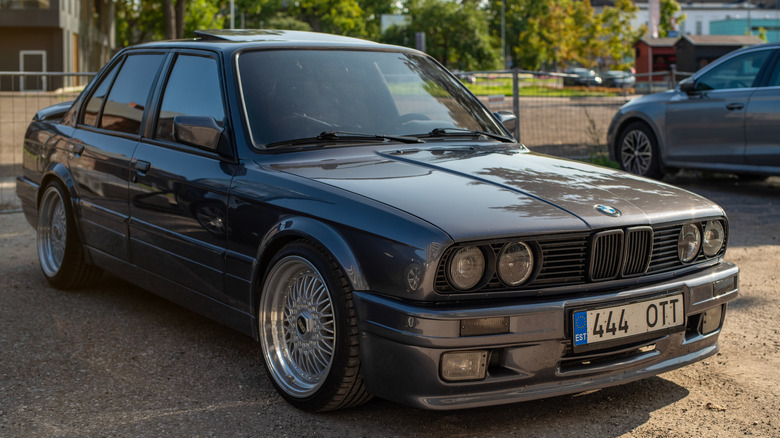5 Of The Best Classic Cars To Restore As A Beginner
Restoring a classic car can only be described as an up-and-down affair. It can feel like an endless cycle of issues. When you fix one problem, another comes up. I learned that lesson with my first restoration project, a Saab 900 Turbo, which taught me a couple of things very quickly. Almost immediately I discovered that my patience threshold was a lot lower than I originally thought and that I should've started with an easier car.
After two years of hardship, I sold my half-done project in hopes of purchasing another one that was equally as interesting while easier on a beginner. I settled on an engine-less and body panel-less BMW E30 which ended up being both of those things. Compared to the Saab, the BMW E30 was exceedingly easy to find parts for, mechanically simple, and had a massive number of resources to reference when I did get stuck. The combination of all three of those factors made my E30 restoration much easier to tackle and enabled me to learn about the technical aspects of an automobile without getting too frustrated. The restoration took five years, but it was one of the most rewarding experiences I've undertaken.
While restoring a classic can be a massive challenge, choosing a car that is common enough to easily find parts for, isn't overwhelmed by modern technology, and is well-documented by a large community of dedicated enthusiasts will make the journey much more rewarding for a beginner. Luckily, there are a ton of domestic and foreign options that meet all of those requisites.
1965-1973 Ford Mustang
The Ford Mustang is one of the most iconic cars of all time and for good reason. The first generation Mustang, available from 1965 until 1973, was one of the first mass-produced "pony cars," giving the average American a big slice of performance at an affordable price. Over eight years of production, Ford sold nearly three million first-generation Mustangs, which is a huge benefit to amateur car restorers for a couple of reasons.
A massive upside is that they are easy to find in all conditions, whether that be a rust pile in someone's front yard, an immaculate show-stopper, or something in between. That allows an amateur to pick and choose not only their starting point but also how much they want to invest upfront. The other pro is widespread parts availability. With so many first-gen 'Stangs out in the wild, there are also a ton of original parts floating around online or at swap meets.
With the Mustang having one of the most loyal enthusiast bases of any American car, there is essentially unlimited information about every aspect of the first-generation Mustang as well. Almost every question that there is to ask about restoring a first-generation Mustang has been answered before, making it extremely easy to find a solution to issues that you encounter along the way.
1968-1974 Chevrolet Nova
By 1968, the Chevrolet Nova had already been around for six years. The Nova initially started out as the top trim level of the compact Chevy II before becoming a standalone model in its third generation. The Nova was overshadowed by its competition at the time, being outsold by outside models like the Ford Falcon and also cars within the GM umbrella including the mid-size Chevelle and sporty Camaro. While the Nova wasn't the most popular Chevy at the time, that fact actually benefits enthusiasts looking for a cheaper restoration project today.
Since the Nova doesn't have quite the same draw as a classic Chevy Camaro or Chevelle, they are often less expensive to pick up in restoration-ready condition. That contradicts some of the other cars on this list that are inexpensive since they were produced in such massive quantities. On the contrary, there aren't as many Novas out there as Camaros or Chevelles, but their relative obscurity keeps them cheap. That isn't to say that Novas are hard to find restoration information about, as they still have a massive fan base of loyal followers which keeps the restoration scene alive.
In addition to the Nova's lower barrier of entry, they are also extremely versatile and well-performing. Nova's are lighter than an equivalent Camaro or Chevelle which is a big performance benefit. They also feature massive engine bays which allow for a ton of engine options ranging from 454 big blocks to more modern LS small blocks. The sheer versatility of the Nova platform makes it a great option for first-timers looking for a slice of muscle on a budget.
1983-1992 Volkswagen Golf
When discussing classic cars that are easy to restore, it's easy to be tempted by American muscle cars. However, not everyone is a fan of stateside straight-liners and some prefer a more sophisticated road manner. Luckily, there are plenty of good European restoration candidates too. A Mk2 Volkswagen Golf is certainly one. The Volkswagen Golf, known stateside as the Rabbit originally, became a hit in the United States thanks to a blend of utility, sturdy build quality, and performance. When the Mk2 Golf arrived in 1983, it was a better car than the Mk1 in practically every category and is considered to be one of the best Golf generations offered between the model's introduction in 1974 and the present day. Even being over 40 years old at this point, they are common to see on the street.
The production numbers of the second-generation Golf make the other mass-produced entries on this list look like a joke. With over six million Mk2 Golfs sold, finding a starting platform for a restoration project is a piece of cake. Easily accessible and inexpensive parts are another result of that. While 16-valve GTI models are the cream of the crop, they can be expensive, even in rough shape. Despite the extra power and performance goodies that the GTI offers, even standard Mk2 Golfs provide a very engaging driving experience for less money. The main thing to look out for is rust, which is common on most high-mileage Mk2 Golfs and can lead to extensive and expensive repairs. Outside of that, Mk2s are a great candidate for a European restoration project.
1967-1972 Chevrolet C10
The terms "classic" and "sports car" are used together so often that it's easy to forget that there are other classic options out there that offer a bit more utilitarian value. While not as ostentatious as a big block muscle car or as well-mannered as a European compact, second-generation Chevrolet C10 pickup trucks are fantastic restoration candidates that can be put to good use in a variety of ways. The 1967-1972 Chevy C10 was offered with a truly dizzying number of different drivetrains, body styles, and option configurations since they were built for so many different types of potential customers. In a similar way, modern C10 restoration projects range from high-horsepower rat-rod builds to ultra-original OEM builds.
Regardless of the desired outcome of the restoration, second-generation C10s provide one of the best starting points for a truck from that period. Hammering home availability again, 1967-1972 C10s are extremely easy to come by. With over two million half-ton variants built, in addition to other heavy-duty options, starter trucks and their parts are a dime-a-dozen. In addition to the widespread availability of original parts, the aftermarket community for modern C10 parts is vast, encompassing everything from suspension components to refreshed A/C units. The same mentality applies to powertrain options as well. Since the 1967-1972 C10 was built with anything from 250 cid straight-sixes to 402 cid big block V8s, there is plenty of space for activity in the engine bay. Modern LS small blocks are a common and inexpensive swap option for many. The sheer versatility of the 1967-1972 C10 platform makes it a great option for anyone looking for a retro truck project of any scope.
1984-1994 BMW 3-Series
I must admit that there is some bias involved here, as a 1986 BMW 325is was the second classic car that I restored on my own. However, that also gives me a unique perspective in recommending one as a beginner restoration project as I have been there and done that. BMW E30s are awesome cars that have a few things going for them that make them a good candidate. For one, over 2.3 million E30s were built between 1984 and 1994, again making them widely available in all conditions.
Whenever I mentioned to anyone that I was fixing up a vintage BMW in my garage, I almost always got the same response: "I bet finding parts for that is a nightmare!" In reality, nothing could be further from the truth. BMW still has "new old stock" at most of their dealerships, meaning that I was able to find most mechanical components at my local dealership. For cosmetic panels and interior bits, I found everything that I needed in salvage yards and online marketplaces. The E30 aftermarket community is just as extensive in what it has to offer. Whether you are trying to build a weekend track car or a show-quality example, the aftermarket part availability is nearly endless.
Finally, classic 3-Series make fantastic beginner restoration projects because they are simple and built to last. The M20 straight-six engines found in the most common U.S.-spec E30 variants are very easy to work on and are often considered one of the most reliable engines that BMW has ever built once they have been refreshed, making them a great platform to learn mechanical skills on.
